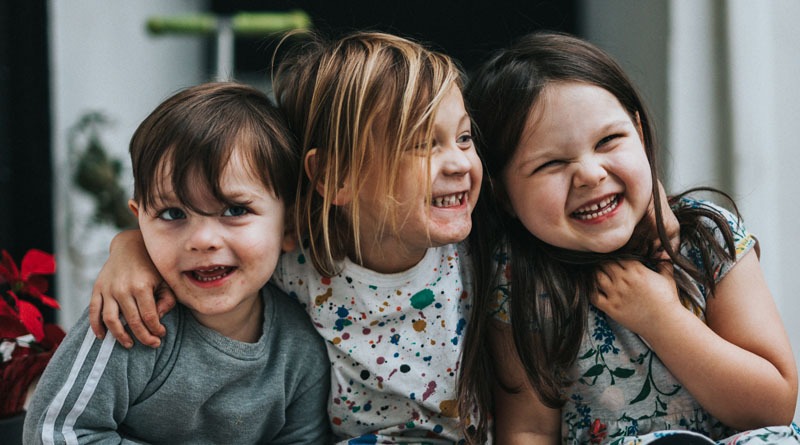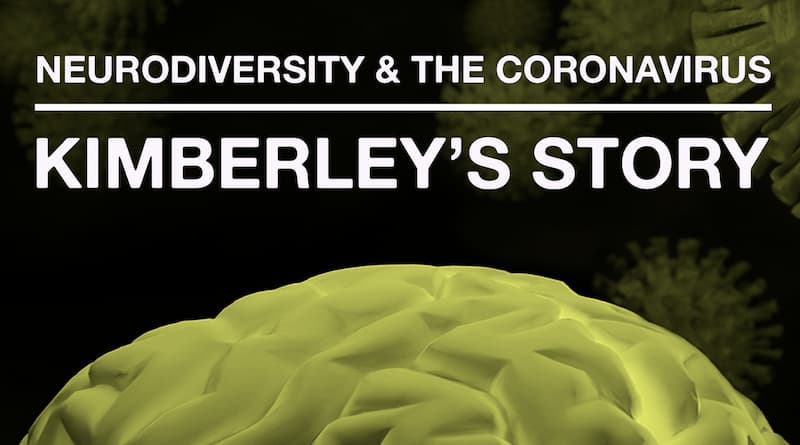
An Inclusive Society: A Team Effort
By Mari Nosal, M.Ed.
A sense of belonging is an innate drive that all human beings poses.
 Whether we poses disabilities are neurotypical, (if anyone could actually be defined as neurotypical as it is defined by social norms and varies according to cultural definitions), possess emotional disabilities , intellectual disabilities , physical disabilities or hidden disabilities : no matter our ethnicity, demographics or economic status. Every human being in society seeks shelter, a sense of meaningfulness, acknowledgment of their existence, supportive individuals in their lives, respect for their thoughts and feelings. and inclusion within society.
Whether we poses disabilities are neurotypical, (if anyone could actually be defined as neurotypical as it is defined by social norms and varies according to cultural definitions), possess emotional disabilities , intellectual disabilities , physical disabilities or hidden disabilities : no matter our ethnicity, demographics or economic status. Every human being in society seeks shelter, a sense of meaningfulness, acknowledgment of their existence, supportive individuals in their lives, respect for their thoughts and feelings. and inclusion within society.
How can this be accomplished? In order for full inclusion and acceptance to occur, both those without challenges and those who poses them must receive opportunities to be educated and be afforded opportunities to interact. For sure, early intervention programs, support groups, inclusive education is non -negotiable, in order for optimum growth and development to occur for individuals with challenges.
be afforded opportunities to interact. For sure, early intervention programs, support groups, inclusive education is non -negotiable, in order for optimum growth and development to occur for individuals with challenges.
In order to promote a fully inclusive atmosphere that affords our loved ones an opportunity to live as autonomous a life as possible from childhood to adulthood, society at large must be offered opportunities to be educated and mingle with disabled individuals as well.
I will present a scenario. Those who care for individuals with disabilities will most likely relate to this. Upon visiting a mall with a disabled loved one who appears different, or acts different than typically developed individuals, some individuals who may not have had much interaction with individuals who possess challenges notice the special needs individuals presence. The person quickly diverts their eyes, their body stiffens with discomfort and they intentionally move aside as a maneuver to avoid the disabled individuals.
The individual may be feeling pity, worry that they may catch the other persons disability, even be uncomfortable as a fleeting thought of awareness causes the person to silently picture themselves as disabled. They may be worried that acknowledgment of the challenged individual may make the person uncomfortable, or offering assistance/comments may insult the person.
Basically, the non challenged person is afraid of the unknown. They have not received enough education or opportunities to interact with individuals with disabilities. Fear of the unknown is born from a lack of knowledge and understanding. Hence, understanding and later, acceptance can be achieved through education and exposure. It is an interdependent relationship.
In order for disabled individuals to experience inclusion, they must be exposed to society at large in an inclusive atmosphere. Society at large must be afforded the same opportunity. For in doing so, the fear of the unknown which is the basis of much prejudice towards individuals who struggle with disabilities is obliterated. A sense of fear is replaced by acceptance. For sure, there are individuals within society that will judge others no matter what efforts to eradicate stigma are in place. However, through creating inclusive atmospheres from infancy throughout adulthood, the stigma and lack of acceptance will diminish.
Providing society at large with opportunities for education and opportunities to interact in inclusive activities can go a long way in enhancing awareness and changing attitudes. It is a win win situation. Disabled individuals are provided with opportunities to have healthy interactions with typically abled individuals and they typically abled individuals can gain an appreciation of disabled individuals challenges AND strengths. Strengths that everyone possesses.
From the so called low functioning individual who is non verbal or non ambulatory, to the so called high functioning able bodied individual. For if one is alive, they have something to offer society. We just have to look deeply. The so called low functioning individual may not possess academic prowess, but may possess a welcoming smile so wide that it lights up and awakens the spirit of all that meet them. All involved can leave their experience with a heightened level of compassion, appreciation and acceptance for the strengths that each and every mortal possesses.
Moral and social blindness can be more of a detriment in society then a blind individual who cannot see. For the blind individual who has impaired vision has no choice regarding possessing the gift of sight. However, they may choose to use other senses to compensate for lacking sight. The sighted individual with social blindness chooses not to expand their senses and see. Instead of walls, lets build windows.
How can we break down barriers and bias?
Offer a hand:
In assisting each other, a feeling of commonality is developed.
Present inclusive workshops:
I have implemented exercises that provide opportunities for disabled individuals to work in teams with typically developing individuals. Speaking about a disability and experiencing it provide different experiences. By experiencing what it is like to have a disability, other individuals gain an understanding and acceptance of their peers and colleagues. One of my favorite activities is to place an individual in a situation where they experience the challenge.
Place blocks at various intervals and configurations on the floor, desks, etc. Place a blindfold on a sighted person and have another individual with challenges guide the blindfolded individual with verbal instructions. This is a positive experience for both individuals. The non challenged person is now dependent on the challenged person for instructions. The positive outcome is that the challenged person is empowered by directing their non challenged friend. The person without a disability learns to appreciate what it is like to have a disability and for the disabled individual who took the helm so to speak. This can be modified for wheel chairs, autism and more.
Lend an ear:
Listen, really listen to the needs and stories of others. Look beyond the body and attempt to see the soul that resides within the person. Show others that you care by inquiring as to how they are doing.
Assumptions need to be disposed of:
We do not know what another’s challenges and strengths are. Even individuals with the same diagnosis have differing challenges. As the old saying goes, if you have met one individual with a specific diagnosis, you have only met ONE.
Find out how to provide assistance:
Offer to find out the particular needs of others. Find ways to develop and congregate at functions and activities in an inclusive an inclusive manner.
Devise inclusive activities:
…such as camping, barbecues and movies through modifications that benefit all involved. Perhaps, such as arranging rooms to allow for wheelchairs, providing trampolines etc. at a barbecue so children with self control challenges have a way to let off steam and their parents can feel comfortable interacting with other peers. Perhaps, provide a babysitter to watch all of the children and provide a positive climate where inclusive interaction is reinforced.
Many parents with special needs children belong to special needs groups but would love to be afforded the opportunity to partake in a book club, wine and cheese party and the like and be included in average activities where they can get away from focusing on special needs for a few hours. Many projects such as Special Olympics where the participants all have special needs are prevalent and vice a versa. ie The Special Olympics and the Olympics. To create opportunities to end stigma and misconceptions, inclusive activities must increase.
My dream is to witness an increase in activities such as inclusive dances versus special needs dances, fundraisers such as car washes that are not segregated by the term special needs but again, have an inclusive atmosphere.

I am utopian in nature. My dream is to build windows and open doors, rather then build walls. When those walls are broken down, we can envision of what lies on the other side. A world of diversity and acceptance where every human being no matter what their challenges is recognized and embraced for their worthiness and talents that everyone possesses.
This article was originally published on LinkedIn: Pulse, reprinted with the author’s kind permission.
Mari Nosal, M.Ed., CECE received her B.A. in psychology and her Masters degree in Educational Foundations from Curry College. She spent years as a school age coordinator, blogger and author, and has over 30 years’ experience within the human services and education fields. She has had special needs articles published in several magazines. Mari is a published author whose special needs Autism and Asperger related books can be found on Amazon.com Barnes and Noble and Createspace. She is certified by the Department of Early Childhood Education as a lead preschool teacher, an infant and toddler teacher, and site coordinator qualified to manage school age programs.
Mari also works with Non Profits, schools, and society at large as well. She conducts public speaking engagements that provide them with the tools and knowledge to help special needs children, (predominantly autism and Asperger (with her specialty being Asperger Syndrome) to become as independent and successful as possible.
Mari has presented autism workshops to staff, management teams, and parent groups. She offers tips on curriculum development and behavior modification within the classroom and through in-services. She is certified by the Department of Early Childhood Education as a lead preschool teacher, an infant and toddler teacher, and site coordinator qualified to manage school age programs.
Inquiries regarding availability for Workshops, Public Speaking Events, motivational speaking and training can be arranged via messaging on LinkedIn.




